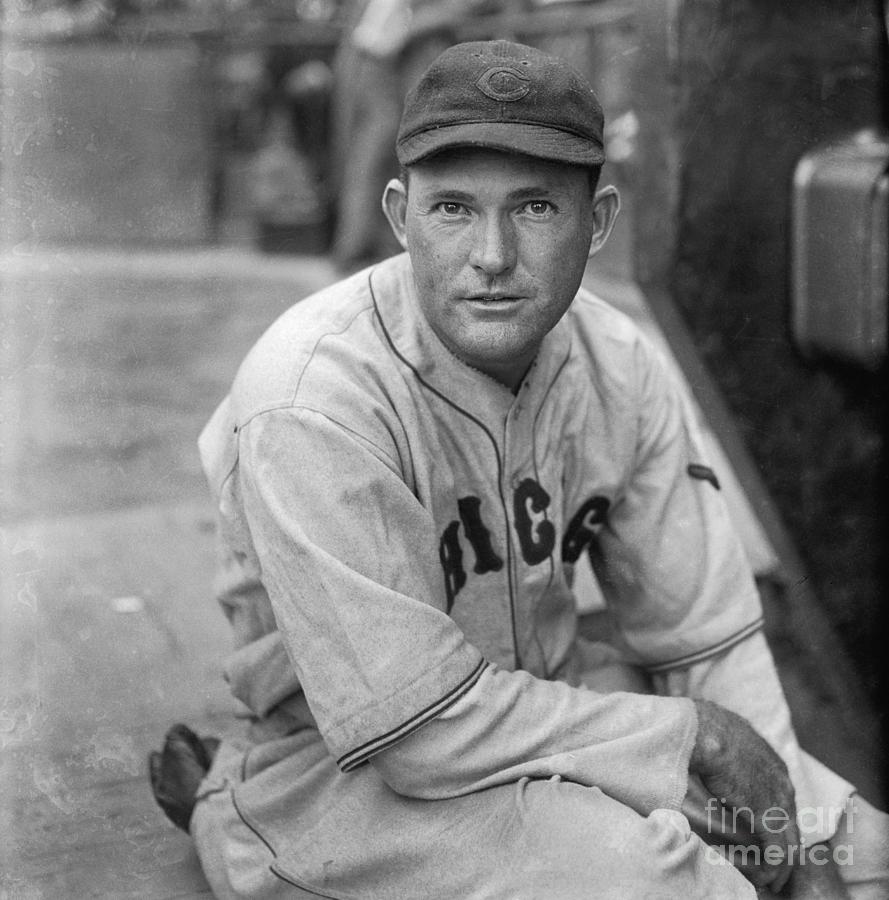Visit the Baseball History Comes Alive Home Page
Subscribe to Baseball History Comes Alive
Free Bonus for Subscribing:
Gary’s Handy Dandy World Series Reference Guide
Rogers Hornsby Photo Gallery
Cubs Fire Manager Rogers Hornsby
In the Middle of the 1932 Pennant Race!
“The worst decision I made in all my years in baseball was hiring Rogers Hornsby to manage the Cubs” – Cub President William Veeck Sr.
Ninety three years ago yesterday, August 2, 1932, the Cubs president, William Veeck, Sr., decided to change managers, even though the team was in second place. There must have been a compelling reason to make such a drastic change in the middle of a heated pennant race…and for Mr. Veeck, there was indeed a compelling reason: He was tired of putting up with Rogers Hornsby. In addition, Hornsby was in the habit of “borrowing” money from his players to cover his gambling debts.
Veeck had had enough of Hornsby and his brash, tactless personality. He replaced Hornsby as skipper with the popular, fun-loving Charlie Grimm, and what a difference it made! “Jolly Cholly” immediately started out his managerial tenure by winning 20 of 25 games on the Cubs’ way to capturing the 1932 National League pennant. Such was the disdain the Cub players had for Hornsby that, even though they advanced to the 1932 World Series, they voted not to give Hornsby a share of the World Series money.
In one of baseball’s great ironies, in 1952, son Bill Vecck, Jr. also made the mistake of hiring Rogers Horsnby, this time to manage the St. Louis Browns, and – you guessed it! – he couldn’t wait to get rid of him!
An Unpopular Manager, But a Great Hitter
The Rajah may have been abrasive and tactless, but he was unquestionably one of the greatest offensive players ever. Over his 23-year career he posted a .358 life-time batting average (second all-time), with 2,930 hits, 1579 runs, 541 doubles, 301 home runs, 1584 RBIs, .434 on-base percentage (8th all-time), .577 slugging average (10th all-time), and batted .400 or more three times. His career 175 OPS+ places him among baseball’s most elite players.
Hornsby was a two-time National League Most Valuable Player, a two-time Triple Crown winner, the “Decade Triple Crown” winner for the 1920s, a seven-time National League batting champion, a two-time home run champion, and a four-time RBI champion. He led the league in doubles four times, runs five times, on-base percentage nine times, and slugging average nine times.
Hornsby’s five-year span from 1921-1925 may be the greatest five-year offensive display in baseball history. During this span, he averaged each year .401, 215 hits, 123 runs, 28 home runs, 120 RBIs, 41 doubles, .474 on-base percentage, .688 slugging average, and 370 total bases. Rajah was named to the Major League Baseball All-Century and All-Time teams. He was elected to the Hall of Fame in 1942.
The Overlooked William Veeck, Sr.
On the other hand, William Veeck, Sr. is one of the truly unsung and forgotten heroes of the early decades of baseball. Veeck has been completely overshadowed by his more flamboyant son, Bill Veeck, Jr. When people hear the name “Veeck” they immediately think of Bill Veeck, Jr. and the Chicago White Sox.
But William Veeck, Sr. left an impressive legacy of his own, including innovative ideas like Ladies Day, and being the first to grasp the possibilities of radio coverage for ball games. Mr. Veeck restructured Wrigley Field into it’s modern appearance, including adding the bleachers, the upper deck, and the scoreboard (OK…so his son planted the ivy!). He hired the first female, Margaret Donahue, to a baseball front office executive position.
Veeck also had the foresight to hire an inexperienced manager from the “bush leagues” named Joe McCarthy, which, at the time, was an unheard of idea. All McCarthy did was bring a pennant to the Cubs in 1929 – their first since 1918 – and then went on to be the winningest manager in baseball history (highest all-time winning percentage, with nine pennants and seven World Series championships), all because William Veeck, Sr. was willing to give him his first chance.
His on-field legacy is also impressive. Finishing last in 1925, Veeck worked beautifully in tandem with innovative Cub owner William Wrigley, and quickly rebuilt the Cubs into a powerhouse. The transformation started when he hired McCarthy as manager and then he absolutely stole Hack Wilson out from under the nose of John McGraw and the the New York Giants. Other impressive signings – including Hornsby, Riggs Stephenson, Charlie Grimm, Stan Hack, Billy Herman, Charlie Root, and Kiki Cuyler – rounded out the Cubs’ budding dynasty, complete with their own version of “Murderers’ Row.”
With the barrel-chested Wilson setting records for home runs, the Cubs became the talk of the major leagues and attendance soared to unheard of heights. By 1929 the Cubs won the National League pennant and were poised to win the World Series. (Unfortunately, that didn’t happen, due to an historic collapse in Game Four of the World Series against Connie Mack’s Philadelphia Athletics). The nucleus that Veeck assembled would go on to win pennants in 1932, ’35, and ’38.
I’ve barely scratched the surface of the many contributions made to the game by innovative Cub president William Veeck, Sr. As an aside, I think Mr. Veeck deserves serious consideration for the executive wing of the Hall of Fame. Hopefully, someday this truly unsung giant of the game will receive his just reward.
Gary Livacari
Subscribe to Baseball History Comes Alive. FREE BONUS for subscribing: Gary’s Handy Dandy World Series Reference Guide. https://wp.me/P7a04E-2he
Visit the Baseball History Comes Alive Home Page

